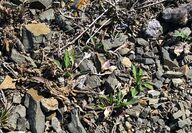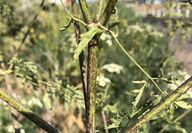Sorted by date Results 1 - 4 of 4

Although anyone who knows me knows that I'm a "certifiable" botany and native plants nerd, I love everything nature. In particular, I share a love of birds with one of my sisters. On a trip together one October, we went to a wild bird rescue facility (Vermont Institute of Natural Science) to attend one program, and ended up staying all day, much to our mutual delight. We often send each other articles, pictures, and messages about birds back and forth from our homes in...

The past few weeks I have been making a concerted effort to take daily walks on the ranch where I live. Last week the snowy path I wandered gave way to a spring melt off event and by mid-week I sighted my first wildflower blossoms. Yet even before the snow cleared, I had begun to see spotted knapweed rosettes emerging at the base of last year's seed heads as well as scattered seedlings. With temperatures reaching the mid to upper 60's, I started to experience an increase in...

I have received several calls about plants that have either just shown up, or have increased in density and distribution with the additional precipitation we have received in many parts of Powell County this summer. Two such plants are poison hemlock and Western waterhemlock. Ingestion of either by humans or livestock can result in illness or death. Poison hemlock, the most toxic of the two, was used to create the potion Socrates was forced to drink in 329 B.C. Some Native...

Noxious weeds have destructive impacts on Montana's landscape including displacing native plant species, increasing soil erosion, and decreasing wildlife habitat and recreational opportunities. Rangeland, pastureland, cropland, forests, and wildlands comprise 92 million acres, or 98 percent, of the total land area in Montana. Both new and continued infestations of these non-native species not only reduce the productivity of cropland and rangeland, but infestations of noxious w...